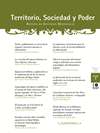Abstract
Resumen: Analizamos, desde la Prehistoria hasta la actualidad, los fenómenos que pueden llevar a sacralizar un territorio y cómo influyen estos en el paisaje y su conformación. Queremos fijarnos en la formación de un espacio simbólico en la geografía salense, señalando sus características específicas y sus rasgos distintivos.
Palabras clave: arqueología, espacio, simbolismo, culto.
Abstract: Salas is a political territory situated in the west-center of Asturias. Here we can found two mountains with a large religious tradition, today transformed in Virgin’s worship (the both support a chapel: to El Visu’s Virgin and to El Llano’s Virgin). Some clues can follow us to an ancient and more extended cult, sendering us to the Mountain worship. These mountains, El Visu and El Picu Muxagre are, respectively, the geographical center of Salas the first, and one of the limits with Pravia the second. The space closed by these two mountains contains the little mound and village El Táranu, as soon another village called Daner, toponyms recognized like the prerroman Taranus, syncretized by the romans with Jupiter, like war and thunder god. At the Middle Ages the process of christianization bears the fitting of sacred places, superposing christian buildings over the precedent one habitually. We analyse, from Prehistory to present time, the elements that can convert a territory in a sacred place, and how these have influence on the landscape and its conformation. We want to focus on the form of a symbolic landscape in Salas geography, indicating its specific characteristics and distinctive marks.
Keywords: Archaeology, landscape, symbolism, worship.

